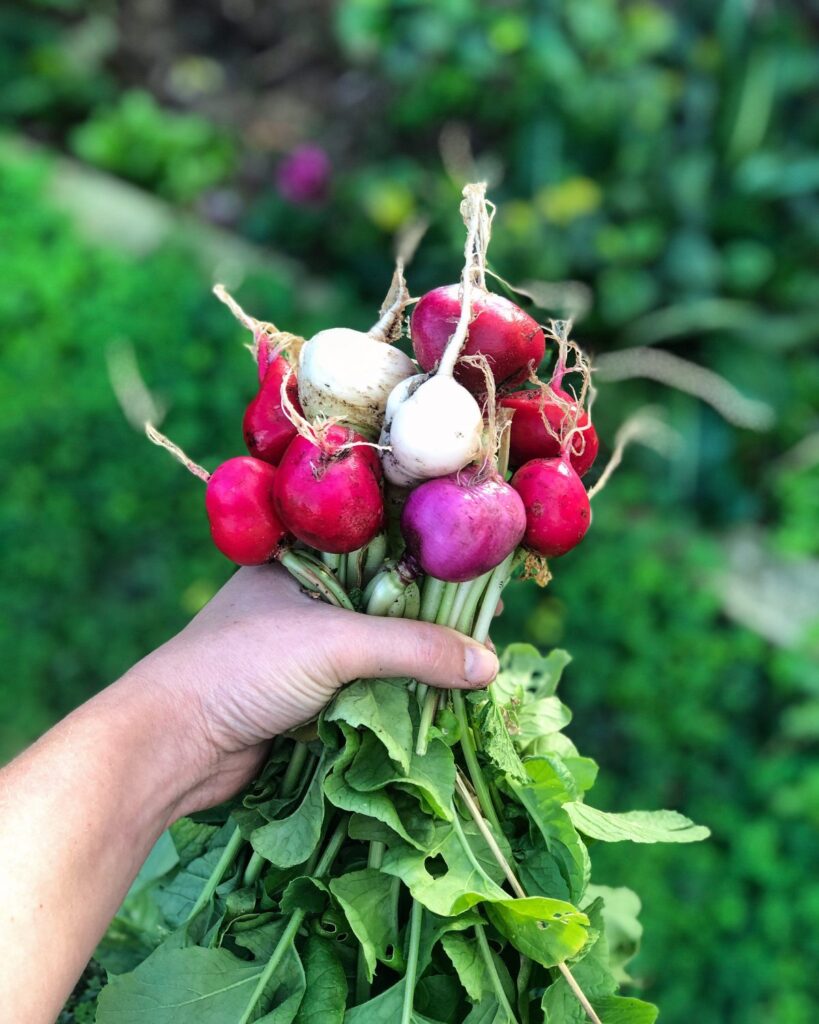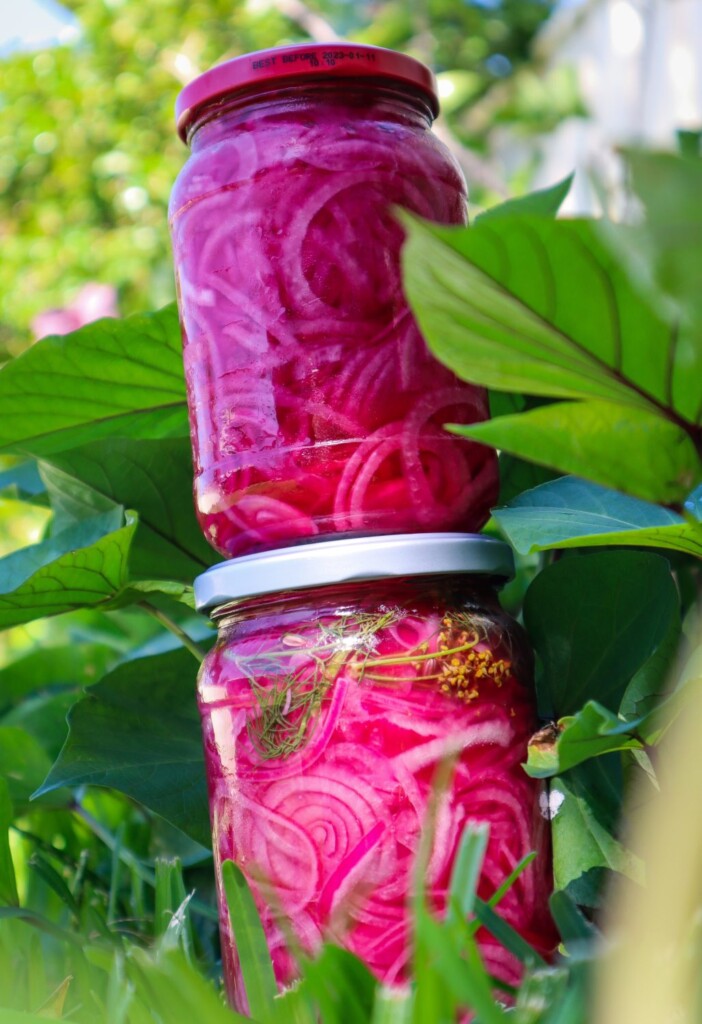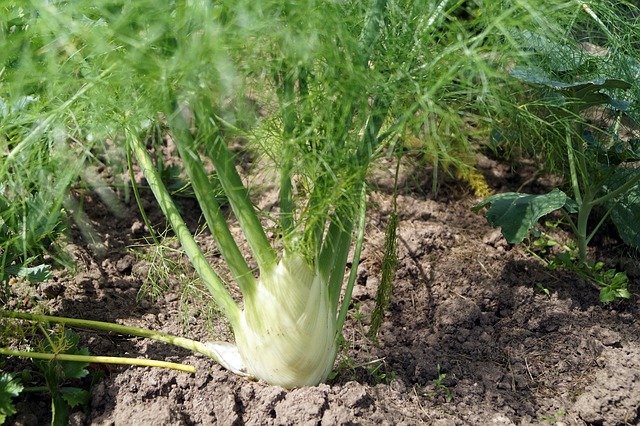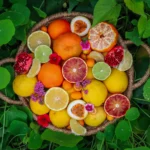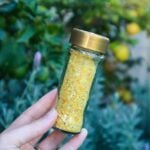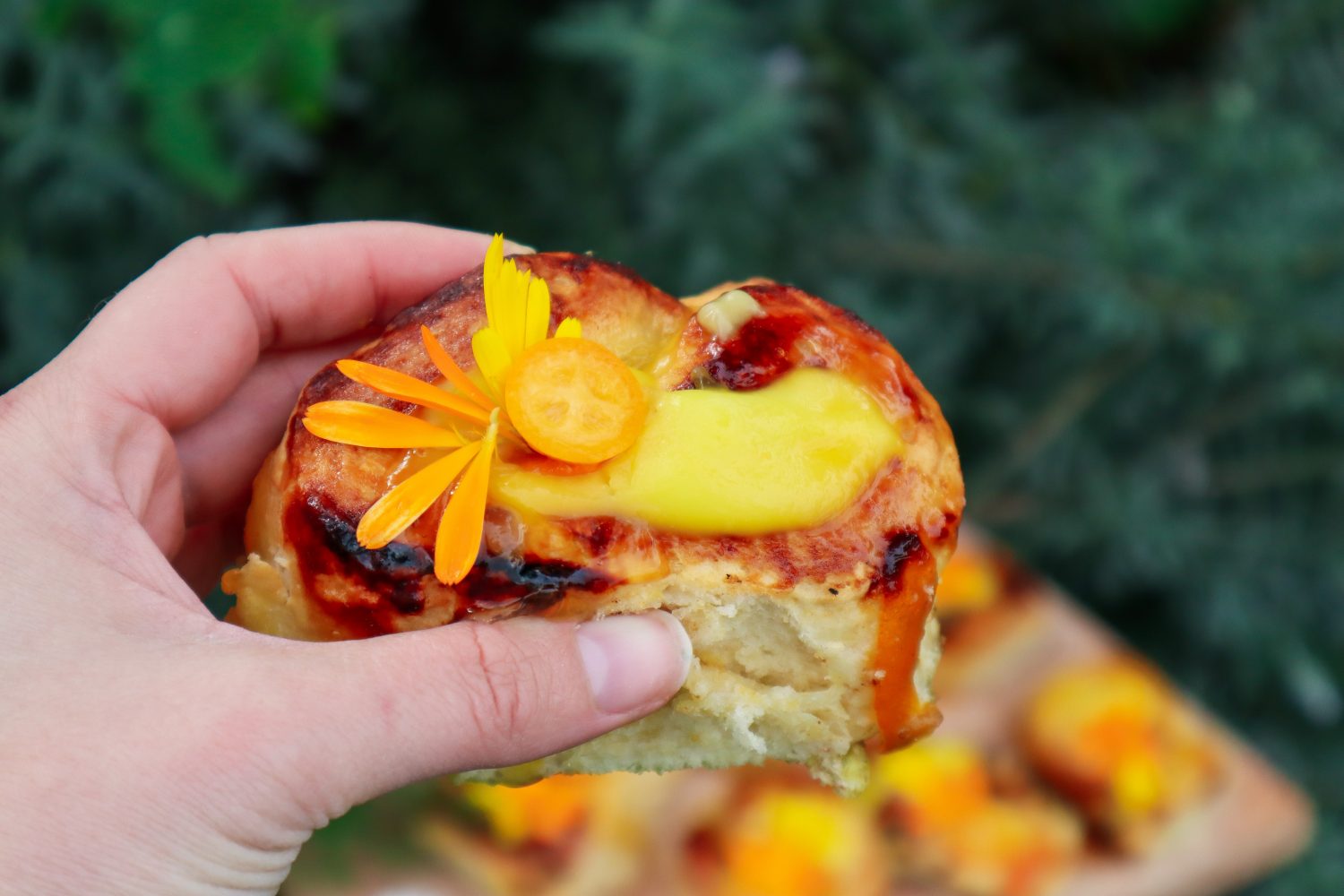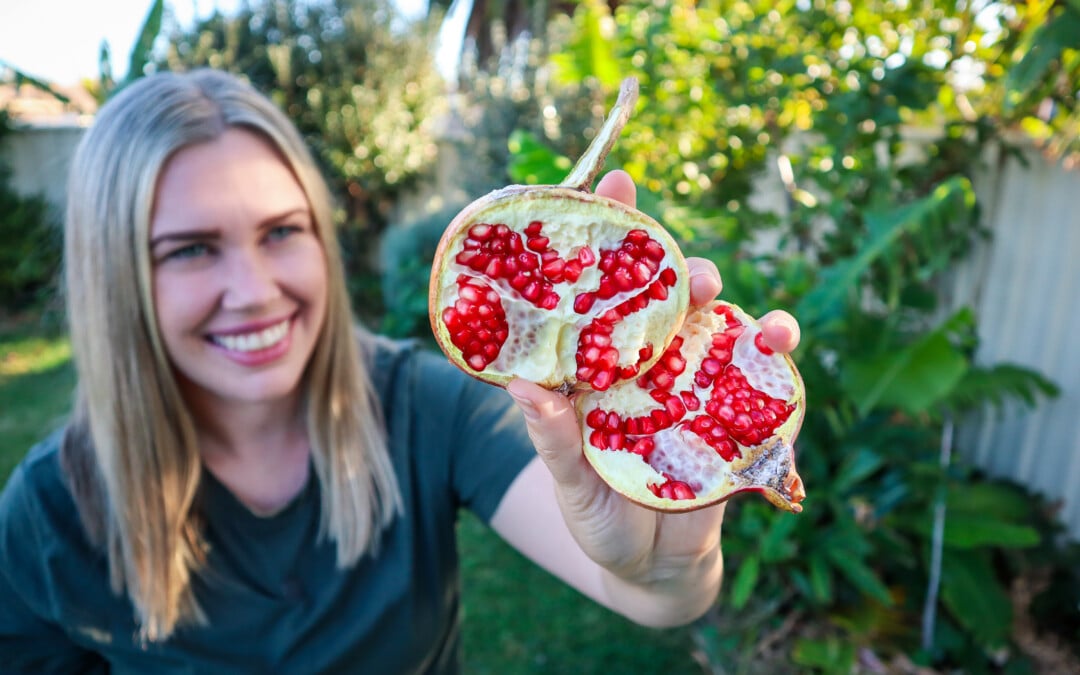
Growing an Urban Food Forest on Less Than 1/5 Acre – Autumn Garden Tour
Welcome to my urban food forest garden in Perth, Australia. It’s currently the end of autumn, the mornings are finally starting to feel cooler, but we still haven’t had much rain….not since last year before the summer, so the garden is just hanging in there. Today, I want to share an update on my urban food forest progress and the wide range of fruit I’m growing in a small space!
🎥 Watch the full Urban Food Forest Garden Tour

Starting a Productive Urban Food Forest on Less Than 1/5 Acre
My garden is high-density, featuring over 200 types of fruit trees, as well as herbs and annual vegetables, all within a property of less than 1/5 of an acre in total. My goal is to have small amounts of many different types of fruit and be able to harvest fruit 365 days a year. This means I’ve said goodbye to spacing rules, utilised dwarf fruit trees, vertical gardening, learnt to multi-graft, and I keep my trees pruned to not only let light in but also create more green material to chop and drop and feed my soil.
I first became inspired by this style of gardening after creating an edible fence screen using food forest style planting in my backyard, which we will take a look at soon, but more recently, I have taken over the front! If you have been a regular YouTube subscriber, you would have seen the process of how we have transformed my front yard from a bare lawn to a mini high-density food forest with lots of tropical fruit trees, raised garden beds to grow annual veggies and a mini wildlife pond home to small fish and frogs. Below is a current update on where we are now!
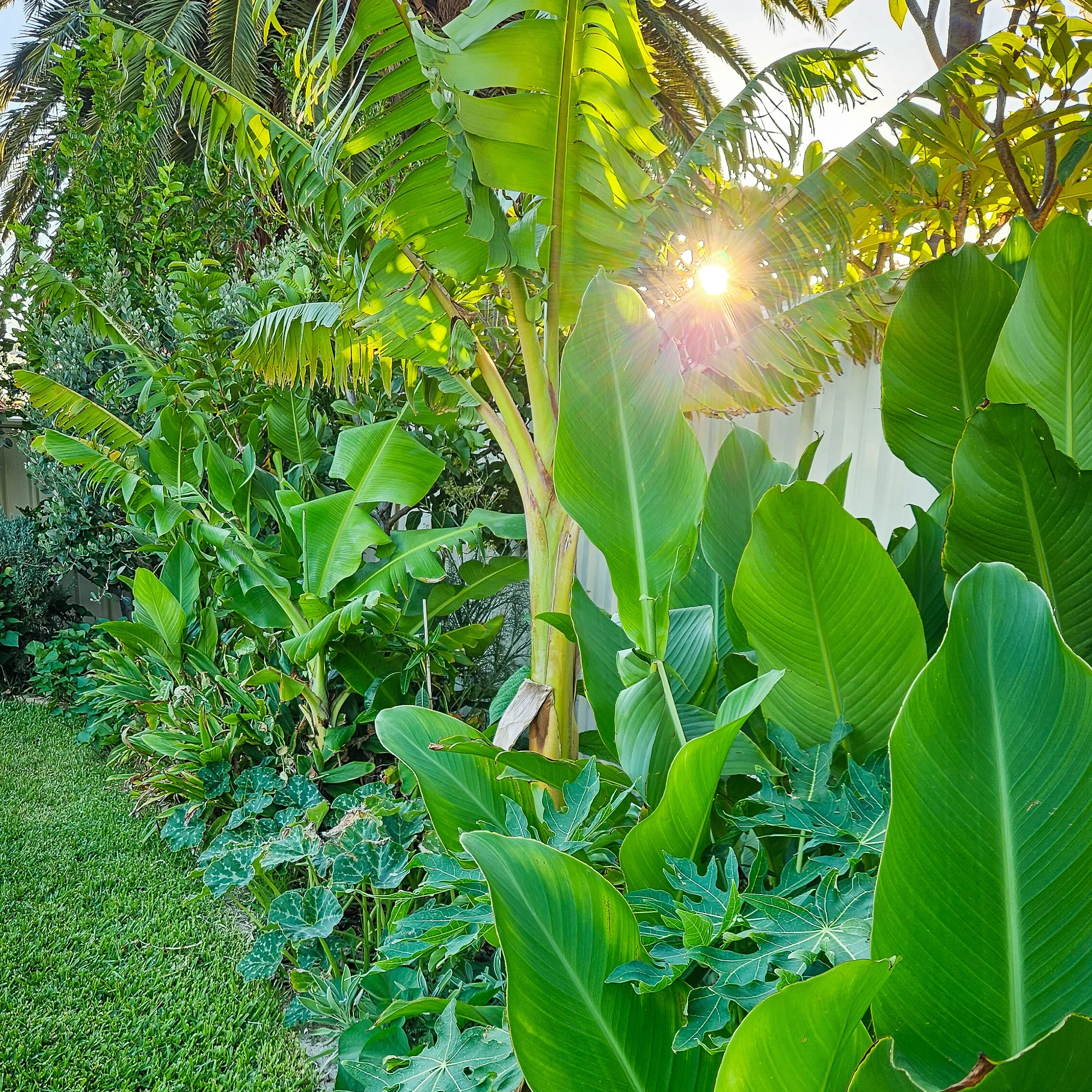
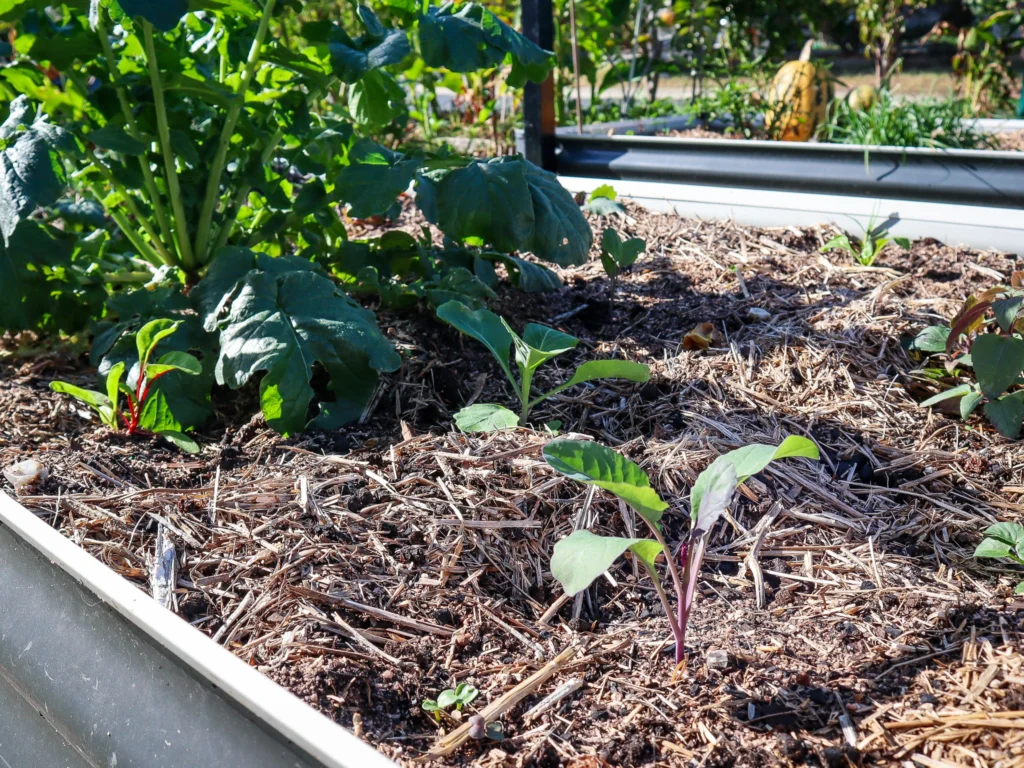
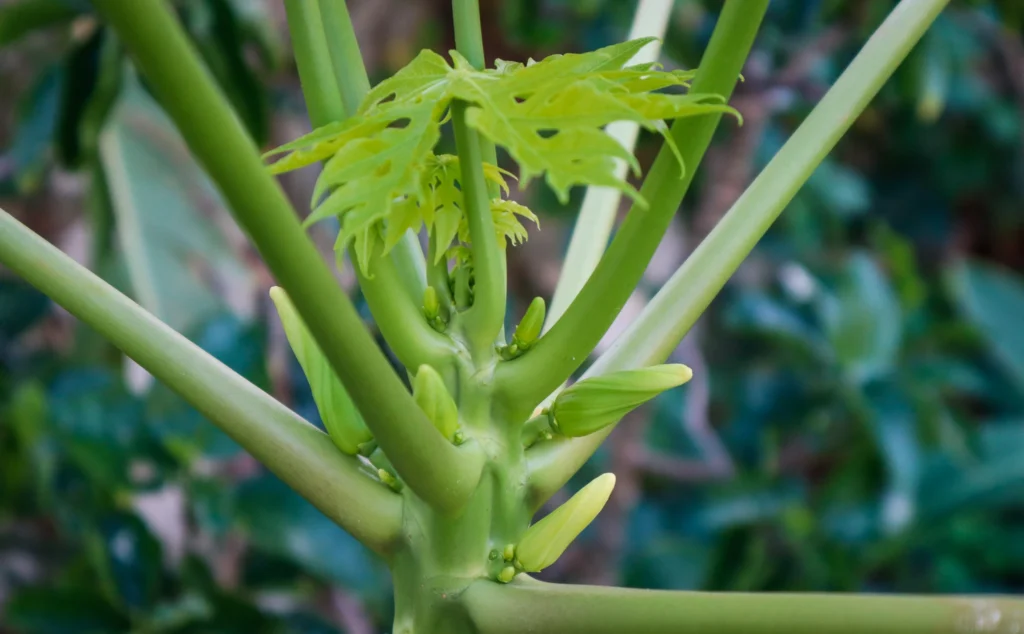
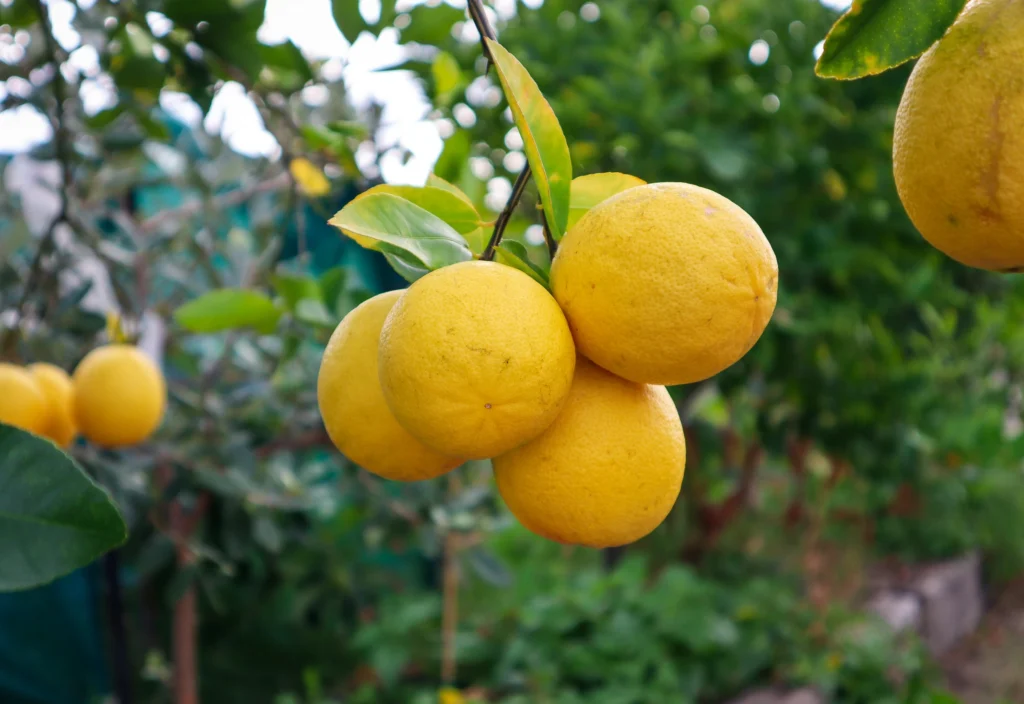
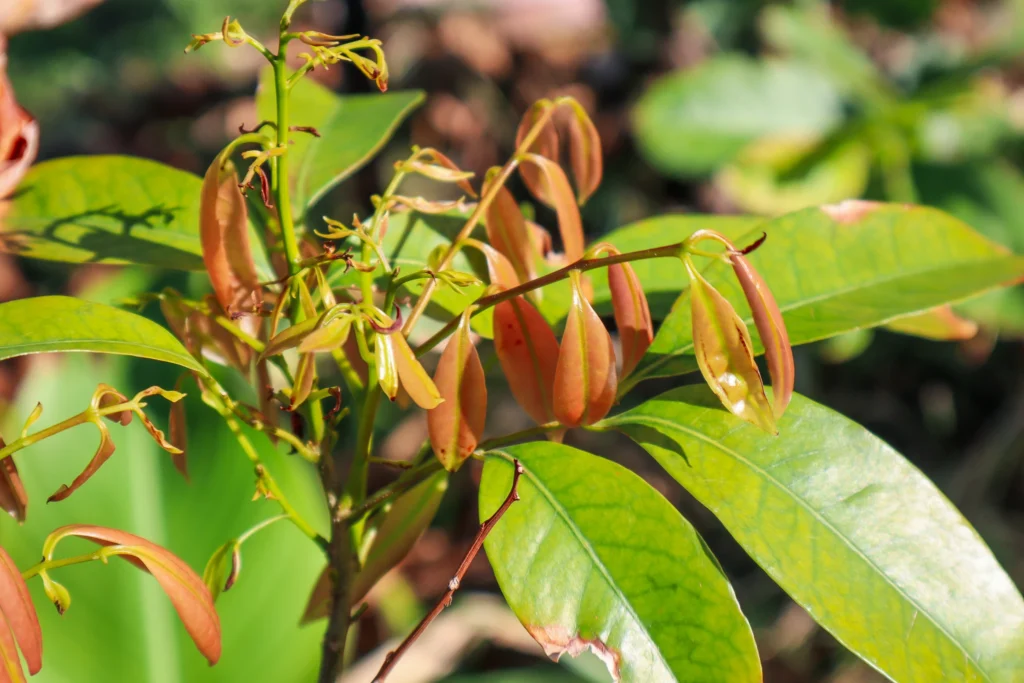
Tropical Fruits Growing in my Front Yard
I started off this front garden by planting evergreen hardy fruit trees to create an edible screen that could withstand the temperatures out here. I have a lime, feijoa, blood orange, guava, mandarin, more feijoa and a lemonade. I have since gone in and added 3 mangos, an avocado, dwarf grimichama, mulch plants, nitrogen fixing plant and edible ground covers.
I have 4 different custard apples now planted, and I definitely have a passion for collecting new varieties of these. It’s a fruit that was rare back home in NZ, but we could grow the Cherimoya, and I was lucky enough to be introduced to that by a rare fruit grower when I was a kid. Now being in Perth, I am lucky enough to have the heat to grow more varieties, and I have (so far) Africa Pride, Paxton Prolific, Hilary White and a Bullock’s Heart, along with a bunch of seed-grown ones. These tend to lose their leaves a bit in winter, so they let light into my raised bed patch in winter, but in summer, they help keep it cool.
I have two different nashi pears, which are another favourite of mine and fruit well in warmer climates, unlike many other pears.
Some of the other fruit trees I have in the front yard include: Louisa Plum, unknown yellow Plum, multigrafted 4-way Plum (Satsuma, Mariposa, Santa Rosa, unknown), Indian Blood Peach, Lemon Mango, Orange Sherbet Mango, Sweet Tart Mango, Thai Mango, Linda Avocado, Choquette Avocado, Soursop, Starfruit, Lychee and more!
Living Shade: Building a Grape Arbour in Hot Climates
We have also constructed a metal arbour to grow living shade with x4 types of grapes planted. But with such intensely hot and dry summers, the grapes have not done much growing, but I am determined to make my dreams grape arbour happen!
What I’m Growing in my Raised Gardens this Autumn 🌱
I have only just planted out my raised beds (at the end of Autumn) with seedlings and seeds because it’s just been so hot and dry, it didn’t seem worth it. But the cooler mornings and with rain forecast for this weekend, I think we might be ready to start the cool-season crops.
Just like my fruit tree planting, I also densely plant my raised beds. This helps stop any weeds from growing and gives me lush garden beds full of food. Currently, I have planted:
- Purple Cauliflower,
- Mini Cabbages
- Lettuce
- Kale
- Sage
- Rainbow Chard
as well as filling all the gaps with:
Edible Flowers for Beauty and Biodiversity
Edible flowers are a non-negotiable in my gardens. I love having the added colour as well as providing food for pollinators and beneficial insects. Plus, by choosing edible flowers, you can also use them to brighten up your meals. It’s a win-win.
Wildlife Pond: Attracting Frogs, Pollinators, and Beneficial Insects
The wildlife pond is getting a lot more shade now with the winter sun lower in the sky. The frogs have mostly disappeared as they go to find more sun or hibernate until warmer temperatures. There are still plenty of tadpoles, but I think these will stay like this until spring and summer because I believe they need more sun to transform. The wildlife pond has been one of my favourite projects out here in the front yard. There’s always so much wildlife to see, and it has become the main hub of my gardens to feed and nourish all my pollinators and beneficial insects.
The Driveway Patch: An Urban Food Forest Extension
Now for an update on my driveway patch! This was a new extension, and I have mainly planted deciduous fruit trees in here. This spot gets lots of hot sun during summer, but in winter, it gets a lot of shade. That’s why choosing deciduous fruit trees is a great idea. They go to sleep during winter, so they don’t mind at all.
I have planted a seed, growing papaya, and it is thriving! It has started flowing along with another 5 I have planted throughout the rest of my gardens. Papayas grow well from seed and quickly! In warm climates, you can go from seed to harvesting fruit in just 1 year! In cooler climates, you may have to utilise greenhouses for winter. My plan is that this will get nice and tall to act as a bit of a natural umbrella for summer.
Summer in Perth is relentless, and with many days over 40 degrees, this garden will very much appreciate an umbrella. I have been adding more shade plants like this throughout the garden to try and help cool my summer gardens.
Creating Shade and Microclimates in an Urban Food Forest
Using plants strategically is something I have been doing a lot in my gardens.
Creating shade: I have a miringa planted in the middle of my tropical section to create beautiful dappled shade for my Soursop, Starfruit, Lychee and Avocado. I also have native plants such as Hakea that grow in poor soil and have quickly become the tallest plants in my new garden. They offer shade and wind protection, plus stunning flowers that the bees love.
Creating Mulch: Mulch plants are another thing I have throughout my gardens that I use for shade, wind protection and then I can chop them back to let light in and feed the soil and act as moisture retention. These are plants such as Pigeon Pea and Queensland Arrowroot.
Backyard Food Forest Updates: Mangos, Papayas & Avocados
Out the back, my original food forest garden has been getting lots of upgrades. I have just planted another mango, this one is the ‘lemon zest’, I also have the ‘Irwin’ and the ‘dwarf palmer’. My biggest seed-grown papaya is flowering, and I am hanging out to see it start to fruit! With more plants starting to flower, hopefully, I get some pollination happening!
In my last video, we took out the lemon tree that was just getting hammered with gall wasp and planted a giant avocado. It’s already pushing new growth, which is a good sign.
Pomegranates are ripe, and I should have harvested them, but I left it too late, and something else has beaten me to it! This Pomegranate has multiple different varieties grafted on it, but so far, just the main Azerbajani has fruited. These are amazing, like nature’s candy!
My bananas are looking good, and the plantain has shot up! My Pinkerton Avocado is looking nice and bushy, and next to that, another seed-grown papaya that has just started to flower. The rollinia is looking rather sad but has started to push all new growth off the side so fingers crossed! Behind that, we have my golden passionfruit growing vertically along the fence and a small sweet granadilla down below that I am cautiously optimistic about.
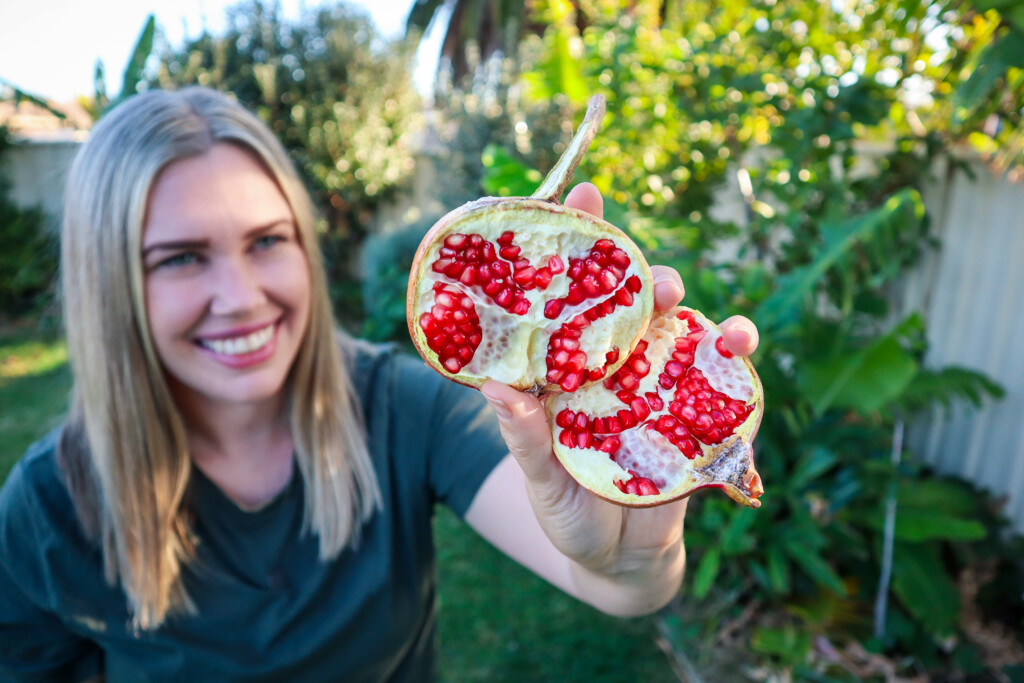
Urban Nursery Corner: Seedlings, Grafting & Downsizing Goals
In my patio nursery, the shade cloth has come down for winter, and I am trying my best to find homes for as many things as I can in the garden. I want to downsize this a lot! I have lots of seed-grown plants here, like mango and custard apple, that I want to use for grafting practice, plus I have blueberries, finger limes and a lot of other things.
I hope you enjoyed this Autumn update of my urban food forest, and make sure you are subscribed to follow along with the progress!
Happy Gardening,
Holly 🌿
Links included in this post might be affiliate links. If you purchase a product or service with the links that I provide I may receive a small commission. There is no additional charge to you! Thank you for supporting my blog so that I can continue to provide you with free content.





